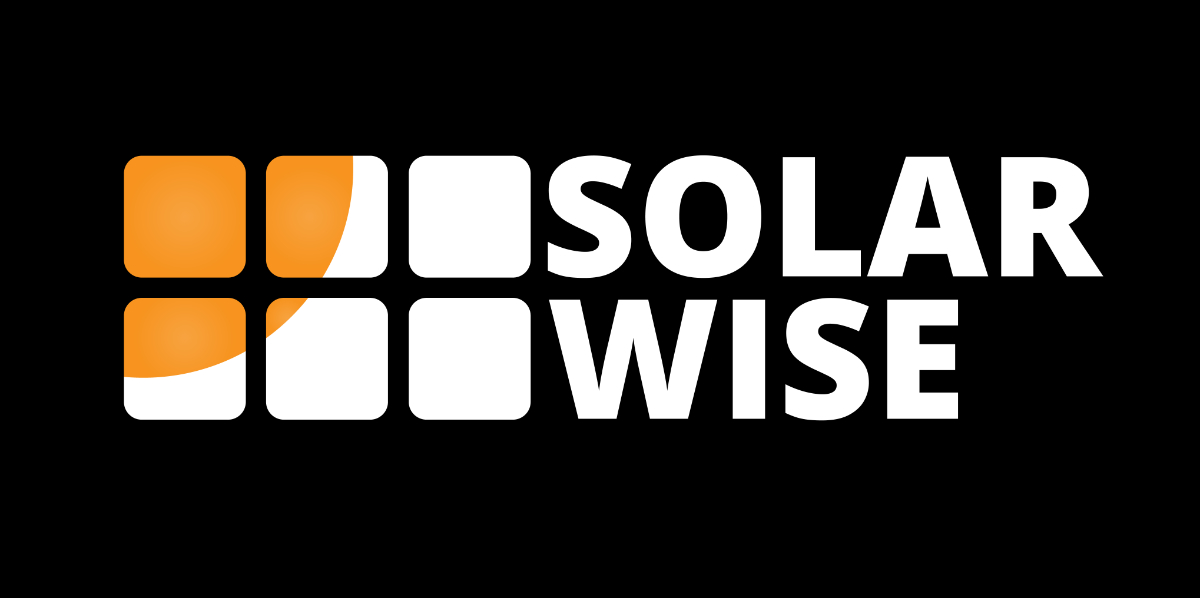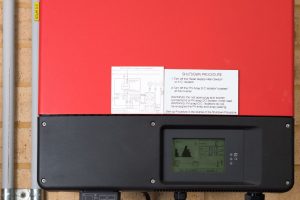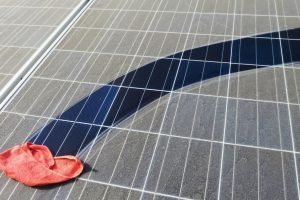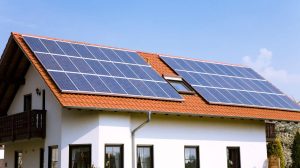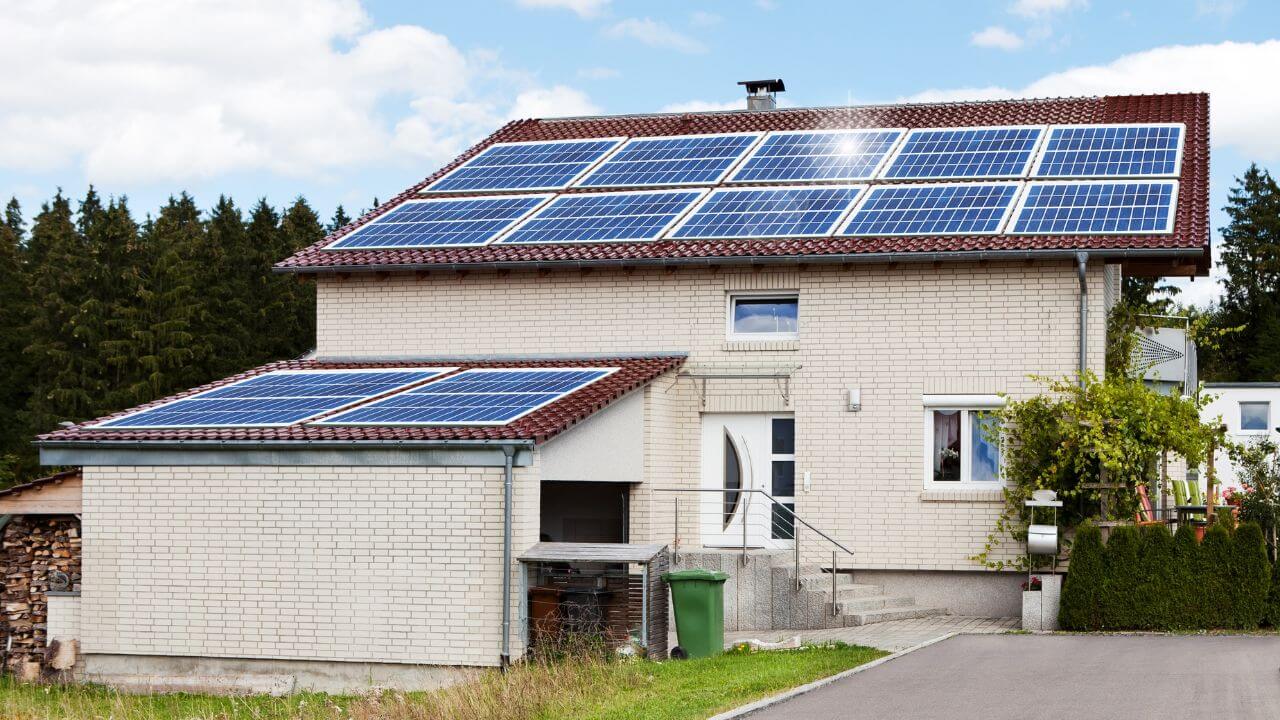As we move towards more green energy solutions globally, residential solar power systems are becoming a favored option for being both environmentally friendly and a viable alternative to traditional energy sources. However, adopting this technology involves overcoming certain hurdles that homeowners must be aware of to maximize efficiency and gain good value for their investment.
This article will delve into the prevalent difficulties associated with home solar power systems, including high setup costs, limited roof area, energy storage issues, and maintenance requirements. Knowing these hindrances can help homeowners make informed decisions to benefit from solar energy implementation fully.
1. Initial installation cost: Home solar energy systems require a significant upfront investment
Home solar energy systems are becoming increasingly popular among homeowners. Still, the initial installation cost can financially hinder many people. Homeowners may need to invest thousands of dollars upfront in equipment and installation costs for their residential solar energy system. Typically, the average home system requires 6-10kWh of power at peak capacity to run effectively and efficiently, meaning more upfront investment is needed as the size of the home increases.
Additional costs are associated with sustaining and maintaining the home solar energy system, such as cleaning and repair fees if something malfunctions over time. Additionally, depending on where you live, it could take years to recoup your initial investment through savings on your utility bill; however, financing options are available if you’re looking for shorter payback periods.
2. Intermittent energy production
One common issue homeowners encounter with residential solar power systems is the variable energy output. A solar panel can only produce energy when the sun is shining, making them dependent on weather patterns and seasonal changes, which might result in fluctuating energy outputs throughout the year. Adding storage batteries to the solar panel systems can solve this issue by retaining surplus energy generated during the day, which can be utilized at night and during high-demand periods.
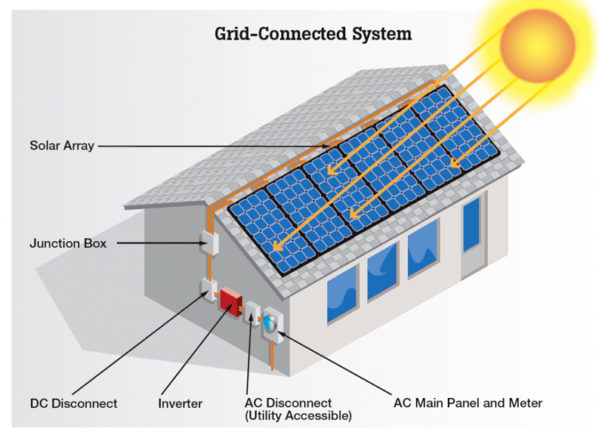
Credit: amplussolar.com
3. Limited roof space
A critical aspect to consider is the limitation of roof space. The shape and size of the roof area designated for panel installation significantly influence the potential solar energy generation. Although a small panel system can be accommodated on most roofs, a more expansive system might necessitate multiple installations and a larger available area. The exact number and dimensions of the panels needed depend on energy consumption requirements and other pertinent factors.
Before installing a residential solar power system, it’s essential to ensure adequate roof space is available to fully harness this potent renewable energy source without encountering any unnecessary spatial restrictions!
4. Aesthetics: Some homeowners might find solar panels unattractive
Solar panels can impact a structure’s appearance, depending on its size and shape. They also affect curb appeal, which could turn away prospective buyers if you decide to sell your home. Even if solar panels are relatively unobtrusive on most roofs or facades, some property owners may prefer them to remain hidden to maintain a certain appearance or aesthetic value of the house.
A potential solution could be exploring different mounting alternatives for solar installations with minimal visual impact. Moreover, technological advancements are underway, including creating intelligent materials that can seamlessly blend a portion of your rooftop with photovoltaic elements that harmonize with the existing roof or siding colors, making it almost indistinguishable from the outside. This innovation allows homeowners to preserve the aesthetic charm of their homes while reaping the benefits of utilizing solar power, a renewable energy source.
5. Maintenance and repair: The equipment associated with solar panels must be maintained regularly
Despite the many benefits solar energy systems provide, they can present maintenance challenges and sometimes require intricate repairs. Thus, homeowners must equip themselves with the necessary knowledge and resources before investing in such a system.
Ensuring home solar energy systems’ longevity and optimal performance necessitates regular maintenance. Solar panels require frequent cleaning to remove accumulated dirt, dust, bird droppings, or other residues that can impede their effectiveness over time. It’s also essential to routinely check for signs of corrosion or other potential damages that might lessen their productivity.
As part of a broader home energy setup, other vital components like inverters, batteries, and wiring should be maintained consistently to guarantee the system’s peak performance. If any system segment requires repairs due to accidental damages or unforeseen incidents like storm damage, it could lead to extra expenditures for parts and labor, which might not have been anticipated in the initial investment calculation.
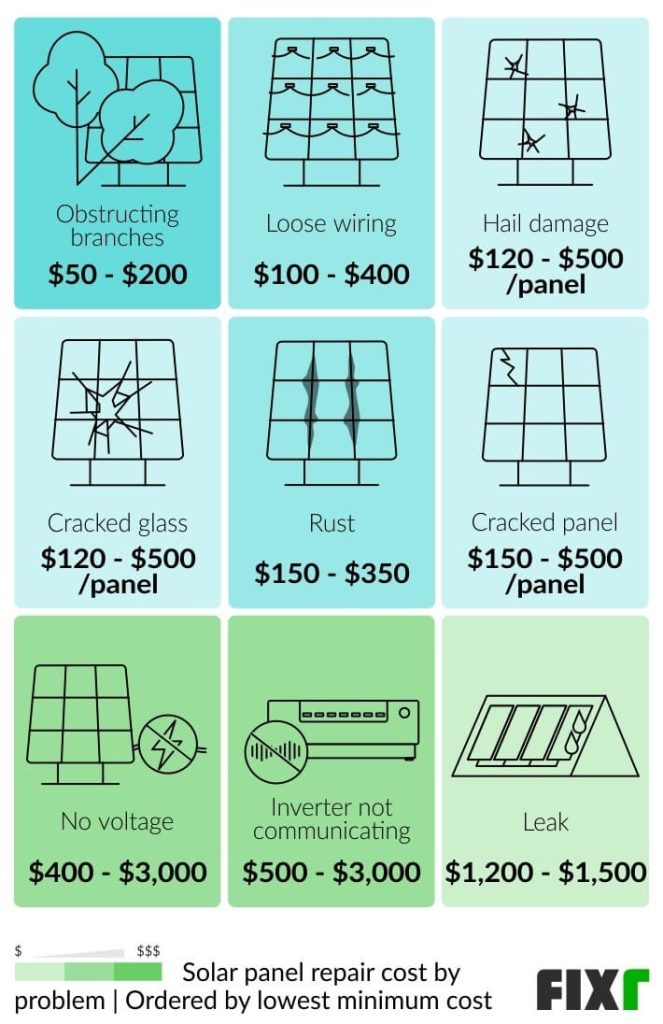
Credit: fixr.com
6. Energy storage: Home solar energy systems may need a battery storage system
Integrating a dedicated battery storage system is crucial to maximizing the efficiency of a standard home solar energy setup. These battery systems are crafted to capture and distribute the electricity generated by solar panels installed in residential and commercial settings. Generally, they are engineered to store the energy harnessed during daylight hours for utilization during nighttime or when solar energy generation is halted due to adverse weather conditions or other unavoidable factors. Implementing such a storage solution is vital, especially for maintenance, as it prevents reliance on utility companies for electricity supply during non-sunlight hours.
Installing a battery storage system for your home solar energy may incur additional expenses, depending on your setup. Additionally, the system may require periodic maintenance, increasing costs over time.
7. Grid connection and net metering: Connecting a home solar energy system to the grid can be complex
Setting up a home solar energy system to synchronize with the grid might be intricate and expensive. Prior to establishing a connection, adherence to the guidelines imposed by the local utility provider is mandatory, along with meeting the stipulations for net metering. Net metering involves sending excess energy generated by your solar system back to the grid, and in return, you receive credits or compensation from the utility company. Since the rules for this process can differ significantly between states, it is of utmost importance to meticulously explore these regional norms before integrating any solar setup.
In addition, utility companies generally demand a thorough examination by a certified installer or electrician before linking a residential solar energy unit to the power grid. This examination and essential actions like line renovations or establishing communication arrays may result in extra expenses that amount to thousands of dollars to attain a secure and successful connection. Moreover, individuals installing multiple electrical capacity systems in one location should be cautious of potential perils. Some power grids may not have the capability to bear the burden of several electricity sources, rendering installation problematic.

Credit: solarsquare.in
8. Inefficient energy conversion: Solar panels typically have an efficiency of 15-20%
Homeowners planning to adopt solar energy must be aware of the technical efficiency of their solar panel arrays to optimize energy production. Generally, solar cells exhibit a 15-20% efficiency rate. Various factors influence solar cell efficiency, including the installation angle of the panels, the cell type, and the duration of sunlight exposure. Understanding these factors can help homeowners make informed decisions about their solar energy systems and enhance energy generation.
The effectiveness of solar panels is predominantly governed by factors such as electrical conversion and heat dispersion. The process of electrical conversion is essentially the transformation of sunlight into functional electrical energy, the efficacy of which depends mainly on the technology and materials incorporated in the solar cells within the panels. Most commercially available solar panels offer an efficiency rate between 15-20%, translating to only a small portion of the absorbed sunlight being converted into electricity. Nonetheless, there have been recent strides in solar cell innovations, including developing multi-junction and perovskite cells to enhance these conversion efficiencies.
Thermal dissipation, however, refers to the heat produced during energy conversion. Excess heat can adversely affect solar panel efficiency, as high temperatures can cause a decline in the panel’s power output. This phenomenon, known as the temperature coefficient, is vital to consider when selecting solar panels for specific climates. To combat these thermal effects, manufacturers incorporate cooling mechanisms, such as passive cooling designs or heat sinks, to minimize performance degradation and prolong the panel’s lifespan.
To sum up
In conclusion, home solar energy systems offer numerous environmental and financial benefits but are not without challenges. Typical problems include:
- High initial costs.
- Intermittent energy production.
- Limited roof space.
- Aesthetic concerns.
- Maintenance requirements.
- Energy storage.
- Grid connection complexities.
- Conversion efficiency.
However, these issues can be mitigated over time with ongoing advancements in solar technology and supportive policies. By understanding these potential hurdles and making informed decisions, homeowners can embrace solar energy as a reliable and sustainable power source, contributing to a greener and more energy-independent future.
